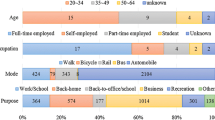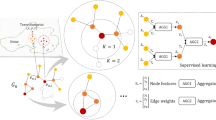Abstract
The identification of stop locations in GPS trajectories is an essential preliminary step for obtaining trip information. We propose a neural network approach, based on the theoretical framework of dynamic neural fields (DNF), to identify automatically stop locations from GPS trajectories using their spatial and temporal characteristics. Experiments with real-world GPS trajectories were performed to show the feasibility of the proposed approach. The outcomes are compared with results obtained from more conventional clustering algorithms (K-means, hierarchical clustering, and HDBSCAN) which usually limit the use of the available temporal information to the definition of a threshold for the duration of stay. The experimental results show that the DNF approach not only robustly identifies places visited for a longer time but also stop locations that are visited for shorter periods but with higher frequency. Moreover, the self-stabilized activation patterns that the network dynamics develop and continuously update in response to GPS input encode simultaneously the spatial information and the time spent in each location. The impact of the obtained results on systems that automatically detect drivers’ daily routines from GPS trajectories is discussed.
The work received financial support from European Structural and Investment Funds in the FEDER component, through the Operational Competitiveness and Internationalization Programme (COMPETE 2020) and national funds, through FCT (Project “Neurofield”, ref POCI01-0145FEDER-031393) and ADI (Project “Easy Ride:Experience is everything”, ref POCI-01-0247-FEDER-039334), FCT PhD fellowship PD/BD/128183/2016, and R&D Units Project Scope: UIDB/00319/2020 and UIDB/00013/2020.
Access this chapter
Tax calculation will be finalised at checkout
Purchases are for personal use only
Similar content being viewed by others
References
Amari, S.: Dynamics of pattern formation in lateral-inhibition type neural fields. Biol. Cybern. 27(2), 77–87 (1977). https://doi.org/10.1007/BF00337259
Andrade, T., Cancela, B., Gama, J.: Discovering common pathways across users’ habits in mobility data. In: Moura Oliveira, P., Novais, P., Reis, L.P. (eds.) EPIA 2019. LNCS (LNAI), vol. 11805, pp. 410–421. Springer, Cham (2019). https://doi.org/10.1007/978-3-030-30244-3_34
Bao, J., Zheng, Yu., Wilkie, D., Mokbel, M.: Recommendations in location-based social networks: a survey. GeoInformatica 19(3), 525–565 (2015). https://doi.org/10.1007/s10707-014-0220-8
Campello, R.J.G.B., Moulavi, D., Sander, J.: Density-based clustering based on hierarchical density estimates. In: Pei, J., Tseng, V.S., Cao, L., Motoda, H., Xu, G. (eds.) PAKDD 2013. LNCS (LNAI), vol. 7819, pp. 160–172. Springer, Heidelberg (2013). https://doi.org/10.1007/978-3-642-37456-2_14
Campello, R.J., Moulavi, D., Zimek, A., Sander, J.: Hierarchical density estimates for data clustering, visualization, and outlier detection. ACM Trans. Knowl. Disc. Data 10(1), 1–51 (2015)
Chen, P., Shi, W., Zhou, X., Liu, Z., Fu, X.: STLP-GSM: a method to predict future locations of individuals based on geotagged social media data. Int. J. Geogr. Inf. Sci. 33(12), 2337–2362 (2019)
Erlhagen, W., Bicho, E.: The dynamic neural field approach to cognitive robotics. J. Neural. Eng. 3, 36–54 (2006)
Ester, M., Kriegel, H.P., Sander, J., Xu, X., et al.: A density-based algorithm for discovering clusters in large spatial databases with noise. In: KDD 1996, pp. 226–231 (1996)
Fernandes, C., Ferreira, F., Erlhagen, W., Monteiro, S., Bicho, E.: A deep learning approach for intelligent cockpits: learning drivers routines. In: Analide, C., Novais, P., Camacho, D., Yin, H. (eds.) IDEAL 2020. LNCS, vol. 12490, pp. 173–183. Springer, Cham (2020). https://doi.org/10.1007/978-3-030-62365-4_17
Ferreira, F., Wojtak, W., Sousa, E., Louro, L., Bicho, E., Erlhagen, W.: Rapid learning of complex sequences with time constraints: a dynamic neural field models. EEE Trans. Cogn. Dev. Syst. (2020). https://doi.org/10.1109/TCDS.2020.2991789
Fu, Z., Tian, Z., Xu, Y., Qiao, C.: A two-step clustering approach to extract locations from individual GPS trajectory data. Int. J. Geo-Inf. 5(10), 166 (2016)
Hamid, R.A., Croock, M.S.: A developed GPS trajectories data management system for predicting tourists’ POI. TELKOMNIKA Telecommun. Comput. Electron. Control 18(1), 124–132 (2020)
Han, J., Kamber, M., Pei, J.: Data Mining - Concepts and Techniques. Elsevier, Amsterdam (2011)
Hastie, T., Tibshirani, R., Friedman, J.: The Elements of Statistical Learning. Data Mining, Inference, and Prediction. SSS, Springer, New York (2009). https://doi.org/10.1007/978-0-387-84858-7
Huang, Q.: Mining online footprints to predict user’s next location. Int. J. Geog. Inf. Sci. 31(3), 523–541 (2017)
James, G., Witten, D., Hastie, T., Tibshirani, R.: An Introduction to Statistical Learning. STS, vol. 103. Springer, New York (2013). https://doi.org/10.1007/978-1-4614-7138-7
Järv, P., Tammet, T., Tall, M.: Hierarchical regions of interest. In: 19th IEEE International Conference on Mobile Data Management (MDM), pp. 86–95. IEEE (2018)
Jin, D., Peng, J., Li, B.: A new clustering approach on the basis of dynamical neural field. Neural Comput. 23(8), 2032–2057 (2011)
Li, Q., Zheng, Y., Xie, X., Chen, Y., Liu, W., Ma, W.Y.: Mining user similarity based on location history. In: 16th ACM SIGSPATIAL International Conference on Advances in Geographic Information Systems, pp. 1–10 (2008)
Luo, T., Zheng, X., Xu, G., Fu, K., Ren, W.: An improved DBSCAN algorithm to detect stops in individual trajectories. SPRS Int. J. Geo-Inf. 6(3), 63 (2017)
McInnes, L., Healy, J., Astels, S.: hdbscan: hierarchical density based clustering. J. Open Source Softw. 2(11), 205 (2017)
Montini, L., Rieser-Schüssler, N., Horni, A., Axhausen, K.W.: Trip purpose identification from GPS tracks. Transp. Res. Rec. J. Transp. Res. Board 2405(1), 16–23 (2014)
Sandamirskaya, Y., Zibner, S.K., Schneegans, S., Schöner, G.: Using dynamic field theory to extend the embodiment stance toward higher cognition. New Ideas Psychol. 31(3), 322–339 (2013)
Schöner, G.: Dynamical Systems Approaches to Cognition, pp. 101–126 (2008)
Ward, J.H., Jr.: Hierarchical grouping to optimize an objective function. J. Am. Stat. Assoc. 58(301), 236–244 (1963)
Wojtak, W., Coombes, S., Bicho, E., Erlhagen, W.: Combining spatial and parametric working memory in a dynamic neural field model. In: Villa, A.E.P., Masulli, P., Pons Rivero, A.J. (eds.) ICANN 2016. LNCS, vol. 9886, pp. 411–418. Springer, Cham (2016). https://doi.org/10.1007/978-3-319-44778-0_48
Wojtak, W., Ferreira, F., Vicente, P., Louro, L., Bicho, E., Erlhagen, W.: A neural integrator model for planning and value-based decision making of a robotics assistant. Neural Comput. Appl. 33(8), 3737–3756 (2020). https://doi.org/10.1007/s00521-020-05224-8
Yuan, J., Zheng, Y., Xie, X.: Discovering regions of different functions in a city using human mobility and POIs. In: 18th ACM SIGKDD International Conference on Knowledge Discovery and Data Mining, pp. 186–194 (2012)
Zheng, Y., Li, Q., Chen, Y., Xie, X., Ma, W.Y.: Understanding mobility based on GPS data. In: 10th International Conference on Ubiquitous Computing, pp. 312–321 (2008)
Zheng, Y., Xie, X., Ma, W.Y., et al.: GeoLife: a collaborative social networking service among user, location and trajectory. IEEE Data Eng. Bull. 33(2), 32–39 (2010)
Zheng, Y., Zhang, L., Xie, X., Ma, W.Y.: Mining interesting locations and travel sequences from GPS trajectories. In: 18th International Conference on World wide web, pp. 791–800 (2009)
Author information
Authors and Affiliations
Corresponding author
Editor information
Editors and Affiliations
Rights and permissions
Copyright information
© 2021 Springer Nature Switzerland AG
About this paper
Cite this paper
Ferreira, F. et al. (2021). Dynamic Identification of Stop Locations from GPS Trajectories Based on Their Temporal and Spatial Characteristics. In: Farkaš, I., Masulli, P., Otte, S., Wermter, S. (eds) Artificial Neural Networks and Machine Learning – ICANN 2021. ICANN 2021. Lecture Notes in Computer Science(), vol 12894. Springer, Cham. https://doi.org/10.1007/978-3-030-86380-7_28
Download citation
DOI: https://doi.org/10.1007/978-3-030-86380-7_28
Published:
Publisher Name: Springer, Cham
Print ISBN: 978-3-030-86379-1
Online ISBN: 978-3-030-86380-7
eBook Packages: Computer ScienceComputer Science (R0)




